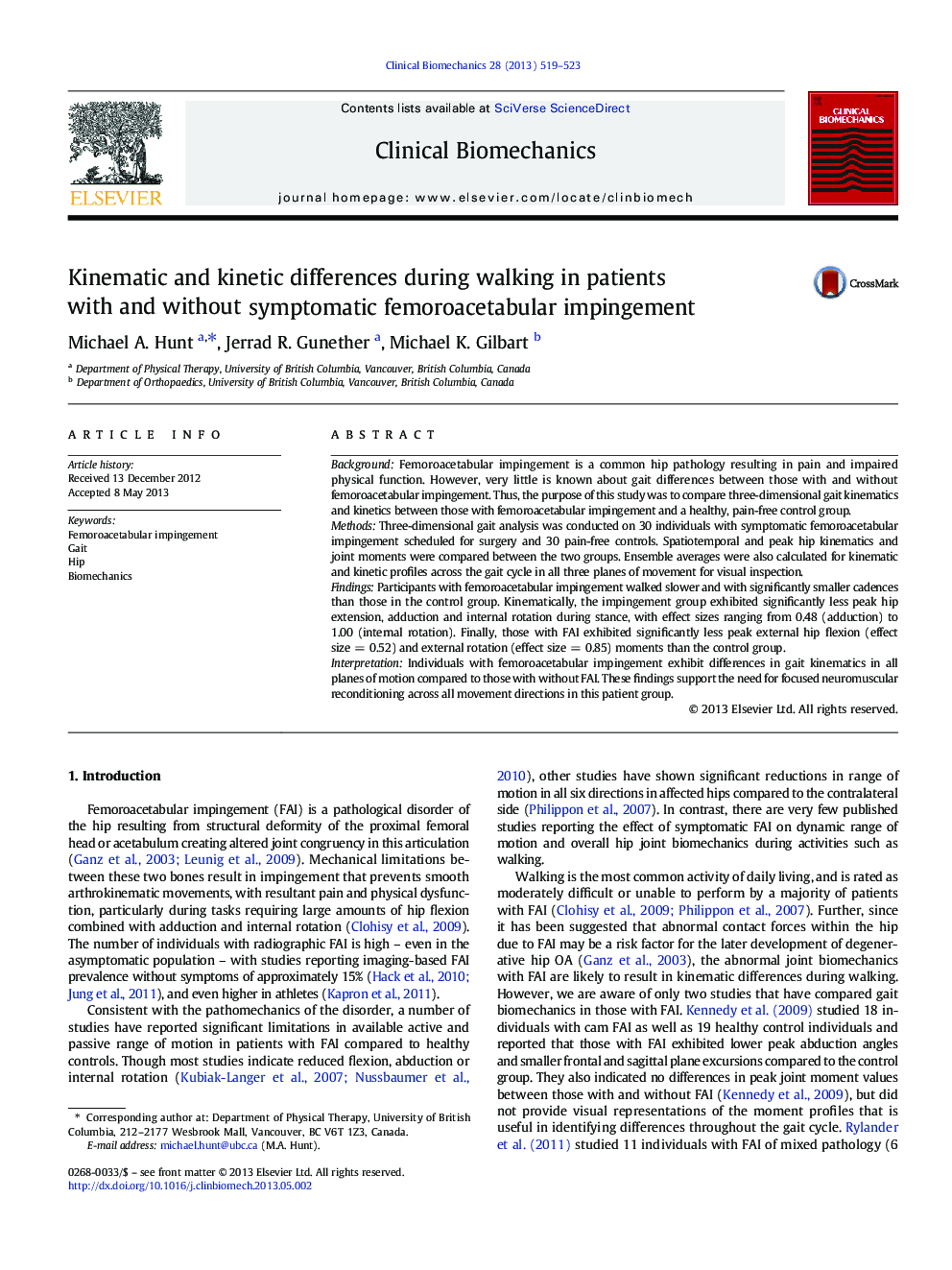| Article ID | Journal | Published Year | Pages | File Type |
|---|---|---|---|---|
| 4050698 | Clinical Biomechanics | 2013 | 5 Pages |
BackgroundFemoroacetabular impingement is a common hip pathology resulting in pain and impaired physical function. However, very little is known about gait differences between those with and without femoroacetabular impingement. Thus, the purpose of this study was to compare three-dimensional gait kinematics and kinetics between those with femoroacetabular impingement and a healthy, pain-free control group.MethodsThree-dimensional gait analysis was conducted on 30 individuals with symptomatic femoroacetabular impingement scheduled for surgery and 30 pain-free controls. Spatiotemporal and peak hip kinematics and joint moments were compared between the two groups. Ensemble averages were also calculated for kinematic and kinetic profiles across the gait cycle in all three planes of movement for visual inspection.FindingsParticipants with femoroacetabular impingement walked slower and with significantly smaller cadences than those in the control group. Kinematically, the impingement group exhibited significantly less peak hip extension, adduction and internal rotation during stance, with effect sizes ranging from 0.48 (adduction) to 1.00 (internal rotation). Finally, those with FAI exhibited significantly less peak external hip flexion (effect size = 0.52) and external rotation (effect size = 0.85) moments than the control group.InterpretationIndividuals with femoroacetabular impingement exhibit differences in gait kinematics in all planes of motion compared to those with without FAI. These findings support the need for focused neuromuscular reconditioning across all movement directions in this patient group.
